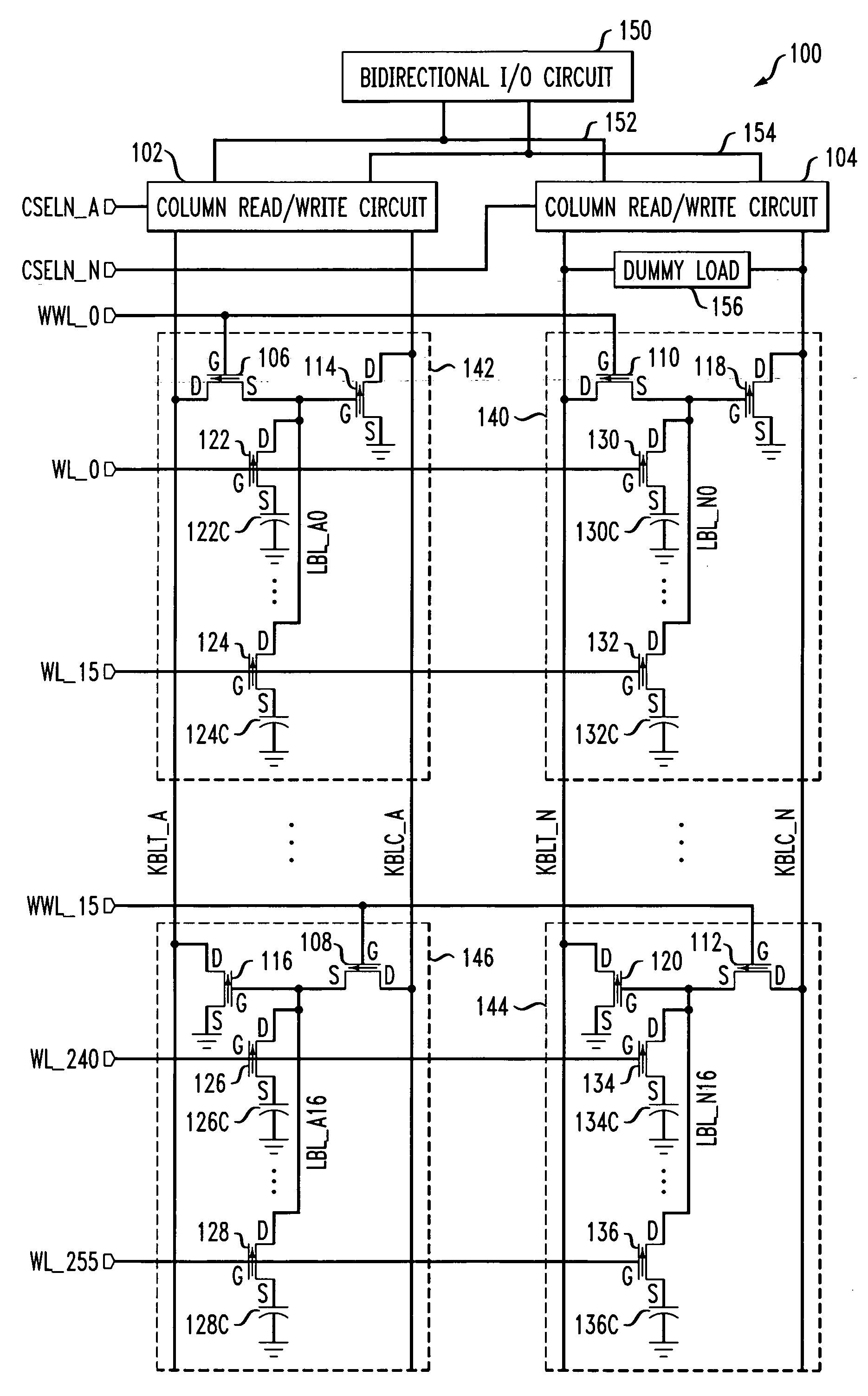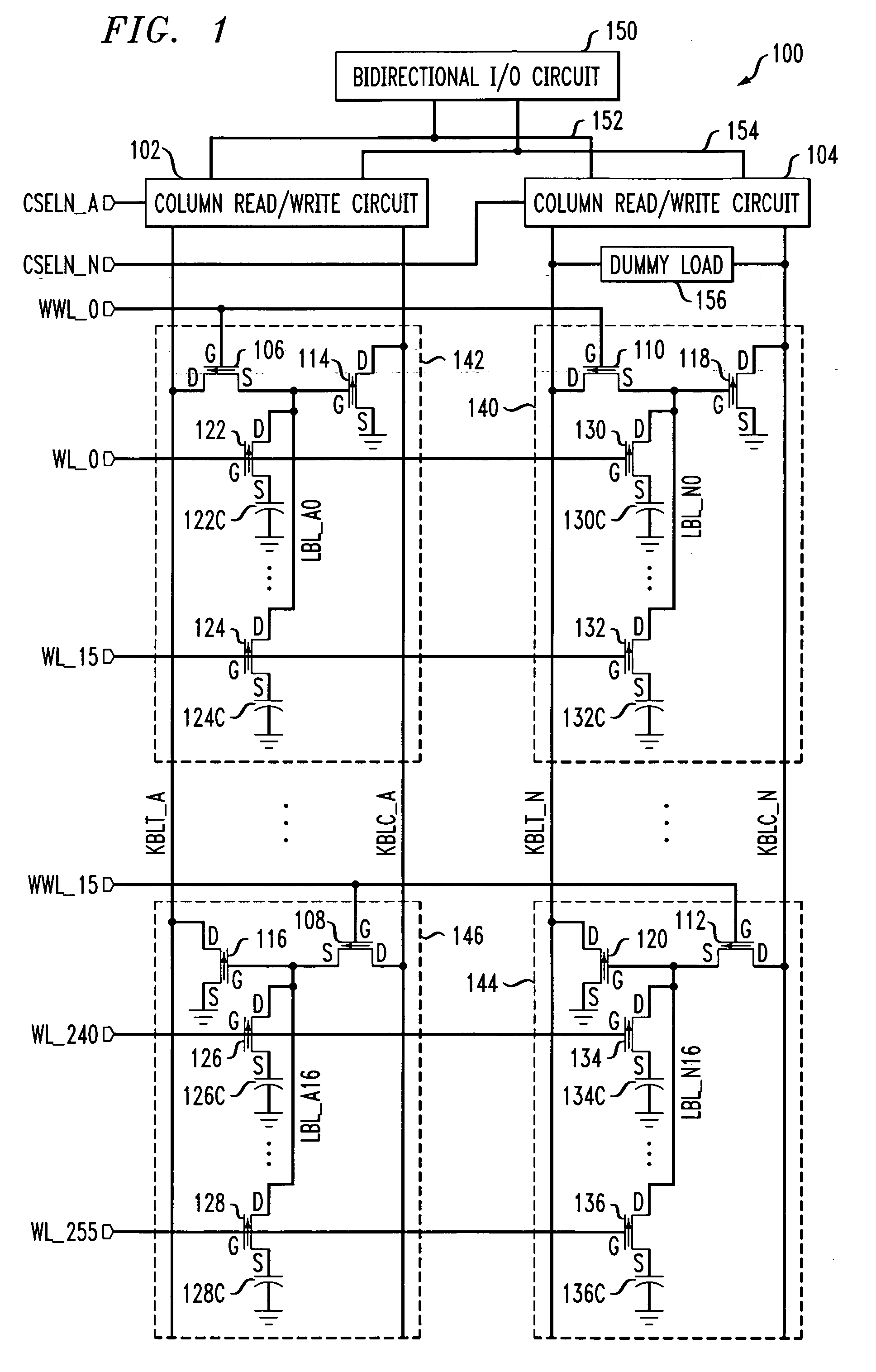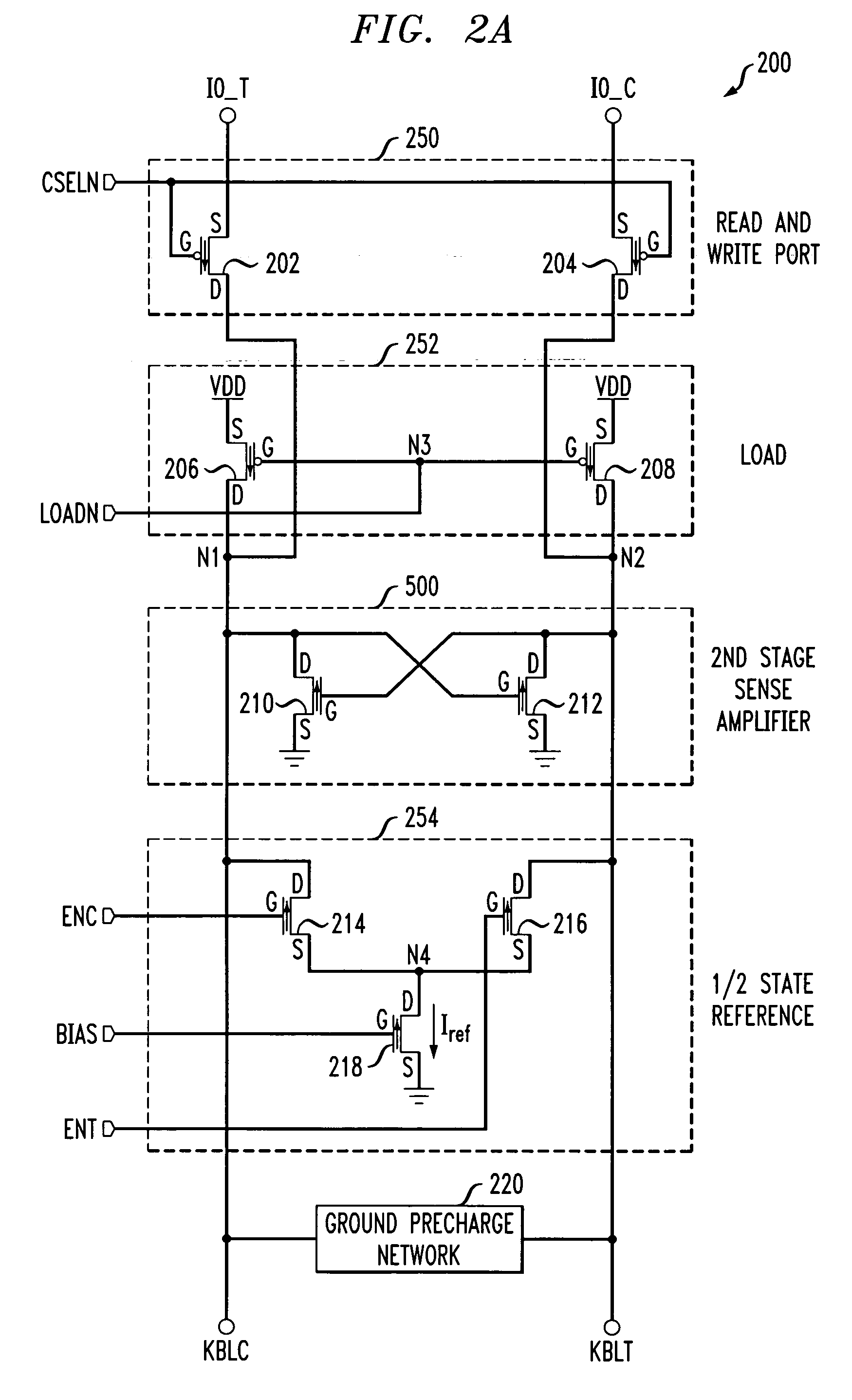Differential and hierarchical sensing for memory circuits
a memory circuit and hierarchical sensing technology, applied in the field of memory devices, can solve the problems of increasing memory size requirements, exacerbating speed and noise immunity problems, and reducing the design of memory circuit architecture to meet such requirements, so as to improve noise immunity in the memory circuit, reduce latency, and the effect of reducing the electrical load
- Summary
- Abstract
- Description
- Claims
- Application Information
AI Technical Summary
Benefits of technology
Problems solved by technology
Method used
Image
Examples
second embodiment
[0061]FIG. 3A is a schematic diagram illustrating at least a portion of an exemplary sense amplifier circuit 300, formed in accordance with the present invention. As apparent from the figure, the sense amplifier circuit 300 is essentially the same as sense amplifier circuit 200 described above in conjunction with FIG. 2A, except that the load 252 in sense amplifier circuit 200 has been modified in sense amplifier circuit 300 to incorporate the functions of the half-state reference generator 254. Specifically, sense amplifier circuit 300 includes a load 301 comprising PMOS transistors 206 and 208, and a switched voltage bias network 302. PMOS transistor 206 includes a source connecting to a first voltage source supplying a first voltage, preferably VDD, a gate for receiving a first bias signal, BIASA, and a drain connected to a complement bank bit line, KBLC, at node N1. PMOS transistor 208 includes a source connecting to VDD, a gate for receiving a second bias signal, BIASB, and a d...
third embodiment
[0066]FIG. 4A is a schematic diagram illustrating at least a portion of an exemplary sense amplifier circuit 400, formed in accordance with the present invention. As apparent from the figure, the sense amplifier circuit 400 is essentially the same as sense amplifier circuit 200 shown in FIG. 2A, except that the load 252 in sense amplifier circuit 200 has again been modified in sense amplifier circuit 400 to incorporate the functions of the half-state reference generator 254, as well as additional features which will be described below. Specifically, sense amplifier circuit 400 includes a load circuit 401 which is operative to provide independent control of the gates of PMOS load devices 206, 208 for the purpose of enabling at least two operational modes, namely, an amplifying mode and a latching mode.
[0067] The load circuit 401 preferably comprises first and second PMOS load devices 206, 208, and a PMOS load enable device 402. A source of each device 206, 208 is connected to a drain...
PUM
 Login to View More
Login to View More Abstract
Description
Claims
Application Information
 Login to View More
Login to View More - R&D
- Intellectual Property
- Life Sciences
- Materials
- Tech Scout
- Unparalleled Data Quality
- Higher Quality Content
- 60% Fewer Hallucinations
Browse by: Latest US Patents, China's latest patents, Technical Efficacy Thesaurus, Application Domain, Technology Topic, Popular Technical Reports.
© 2025 PatSnap. All rights reserved.Legal|Privacy policy|Modern Slavery Act Transparency Statement|Sitemap|About US| Contact US: help@patsnap.com



